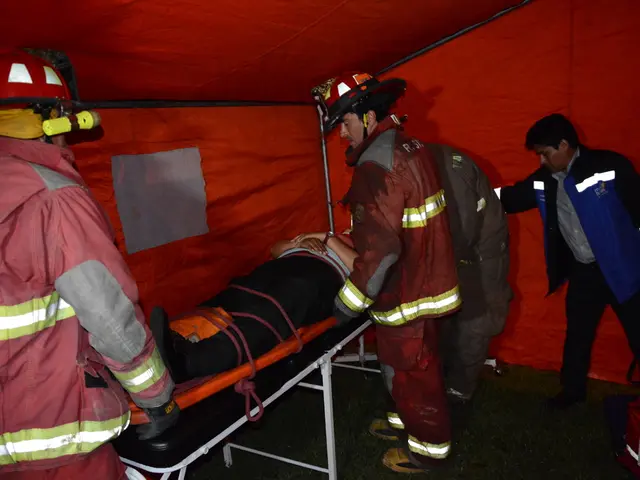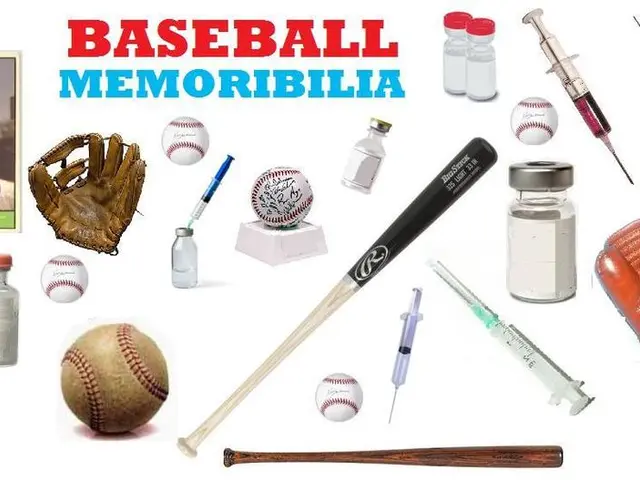ASF Alert in NRW: First Suspected Case and Response
First reported instance of African swine fever detected in North Rhine-Westphalia (NRW) - Initial reported instance of African swine fever detected in North Rhine-Westphalia (NRW)
Ready your boots, folks! The drama's unfolding in North Rhine-Westphalia, where African Swine Fever (ASF) might just be lurking. A deceased wild boar found in Kirchhundem, Olpe district, has sparked a probe by the Ministry of Agriculture and Consumer Protection. Initial tests by the Chemical and Veterinary Investigation Office (CVUA) Westfalen in Arnsberg showed positive signs of ASF, though verification from the Friedrich-Loeffler-Institut (FLI) is still pending.
Don't panic, (and definitely don't freak out)—at this point, it's just a single suspect boar. Already, preventive measures are in full swing to protect the region from the hold of ASF.
Brace Yourself for the Potential Tumult
Rest assured, ASF poses no threat to humans and other domestic or farm animals. But an infection in swine, wild or otherwise, is typically lethal.
Alarmed bells are ringing, and quick measures have been taken—an ASF coordination group has been pulled together, and they're standing prepared for confirmation of the infection from the FLI. In this scenario, containing the disease and preventing its spread to domestic pig populations becomes priority number one, as there's no magical ASF serum to save the swine.
The virus, initially a continent-hopper, first reared its ugly head in the EU in 2014. NRW, hailing from the same league, has been proactively bracing for an ASF outbreak since day one. June 2024 marked the disease's debut in the neighboring federal states of Hesse and Rhineland-Palatinate, with our wild boar friends not being spared in the neighboring states. Domestic pig populations have also fallen victim.
Spread: Beyond Boar-to-Boar Bonds
Direct contact with infected wild boars and sloppy human behavior are the usual culprits behind ASF transmission. But don't forget: you can catch the bug via contaminated clothing, shoes, tires, or even recklessly thrown away sandwiches. The source of the Rhine-Main area's outbreak was suspiciously the careless disposal of food remains.
In 2024, NRW Agriculture Minister Silke Gorißen (CDU) made a foreboding prediction: ASF in NRW was less a question of "if," but "when." She called out to traveling souls, truckers, and daily commuters to refrain from thoughtlessly discarding food remains at rest stops. The state has bolstered the deployment of specially trained dog units in the forests.
Westphalian farmers, prepare your farms! The discovery of the wild boar carcass suggests that ASF could be encroaching upon NRW. Hubertus Beringmeier, president of the Westphalian-Lippian Agricultural Association, cautioned that ASF might not halt at NRW's borders. He also warned the populace to expect restrictions like access limitations to forests in probable restriction zones surrounding the ASF virus.
The community is urged to intensify aid to the steel industry, given the escalating potential threat of ASF to the region, particularly in North Rhine-Westphalia. In light of this, it is crucial for the public to be informed about medical-conditions like ASF, ensuring health-and-wellness for both humans and animals, and adhering to environmental-science guidelines to prevent further spread. The steel industry, with its intricate networks, should be vigilant in implementing stringent control measures to safeguard against any unforeseen consequences. The steel industry's resilience in the face of crises, such as ASF, will require a collective effort, with scientific understanding playing a pivotal role in prevention and mitigation strategies.




